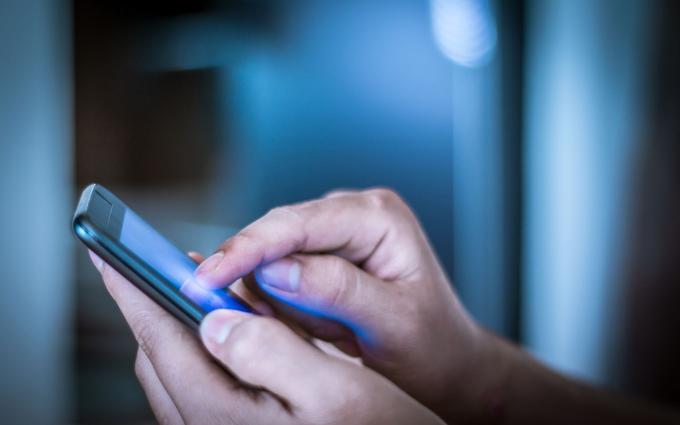Mobile phones: are anti-radiation accessories really useful?
Patch to stick on the back of your phone, anti-radiation earpieces, protective shells... In recent years, the emergence of fears concerning electromagnetic waves has given rise to a flourishing market, that of anti-radiation accessories. Their promise? Protect the user from the waves emitted by his mobile phone by reducing their power. The problem is that the effectiveness of these devices has not been demonstrated. And above all, they meet a chimerical need since there is currently no proof of a harmful effect of mobile phones on health, despite hundreds of studies carried out.
What are radio frequencies?
“The focus of minds on the question of the effectiveness of anti-radiation devices diverts attention from the preliminary question, which is: is it necessary to protect oneself from the waves emitted by mobile telephony?”, asks Sébastien Point, physicist and member of the French radiation protection society. It is impossible to answer this question without first looking at the nature of these waves.
These are radio frequencies, which belong to the large family of electromagnetic waves, ranging from very low frequencies (power lines) to X-rays. Unlike high frequency waves - ultraviolet rays for example - radio frequencies do not have sufficient energy to break DNA molecules. On the other hand, part of their energy is absorbed by matter and can make molecules vibrate, such as water molecules. If the level of exposure is high, this causes heating.
” READ ALSO – Health: should we be afraid of electromagnetic waves?
SAR, a safety threshold
To quantify this exposure, a reference measurement is used: the specific absorption rate (SAR). Expressed in watts per kilogram, this indicator represents the amount of energy absorbed by the parts of the body exposed to radiofrequency waves. Mobile phones must not exceed a SAR limit value set at 2 watts per kilogram, i.e. a safety threshold 50 times lower than that from which thermal effects appear. “As a general rule, we are 1 to 5% of the maximum authorized, so the standards protect us very effectively”, underlined Yves Le Dréan, biologist at the Institute for Research in Health, Environment and Work (IRSET), in a previous article.

In an opinion published in 2015, the European Commission reaffirmed that “no harmful effect on health has been established if exposure remains below the levels set by the standards in force”. Studies have indeed raised a link between the radiofrequencies produced by mobile phones and an increased risk of brain tumours. But “other studies have not confirmed this link and one of them, in particular, suggests interpreting this link with caution: the incidence of the corresponding tumors has not increased since the appearance of the mobile phones", underlined the European Commission.
It happens that manufacturers are pinned down by the National Frequency Agency, which ensures compliance with exposure limit values. In this case, they must comply, either by updating the phone's software or by removing it from the market. And even if the standard is exceeded, "that does not necessarily mean endangerment", argues Sébastien Point.
Baseless allegations
But after all, why not use anti-radiation accessories, as a precaution? Some manufacturers promise to reduce SAR by up to 99%. But not all are able to provide proof of the effectiveness of their products. A 2015 investigation by the Directorate General for the Prevention of Fraud (DGCCRF) revealed that most of the allegations displayed "have no basis" and that they "are often based on fanciful or entirely invented".
Some manufacturers indeed put forward explanations that leave doubts. “It is a converter, which permanently transforms emissions of negative electromagnetic waves into emissions of revitalizing positive waves beneficial to our health,” says one of them on his website about his device. The DGCCRF notes, however, that the majority of sellers presented studies, but these were not “officially recognized” and some were “old” and “did not relate to mobile phones on the market”.
An uncertain effect
A little earlier, in September 2013, the National Agency for Food, Environmental and Occupational Health and Safety (ANSES) published the results of a test on the effectiveness of 13 anti-radiation devices . The experts conclude that these objects have “no conclusive effect without altering the performance of the mobile phone”. On the contrary, “the protections which modify the radioelectric performances of the mobile telephones (...) are likely, under real conditions of use, to increase the level of exposure of the user”. “Telephones emit a power which is a function of the proximity to the antenna”, explains Anne Perrin, specialist in electromagnetic risk and co-author of the work Electromagnetic Fields, Environment and Health (Ed. EDP-Sciences). “If we prevent the waves from passing through, the telephone risks emitting more. There is no guarantee of being less exposed.
"This market seems to me to evolve on the phobia that some people develop in the face of the waves," says Sébastien Point. "The existence of anti-radiation objects, and the debates on their effectiveness could, in my opinion, reinforce their conviction that it is necessary to protect themselves from the waves, that technological progress exists in this field and can allow them to feel better: therefore, the anti-radiation devices would become in a way counterphobic objects that they could not do without.”
And if you want to reduce your exposure to radio frequencies at all costs, there is still a simple way: move the phone away from your head by equipping yourself with a hands-free kit. Indeed, "For all radiation, the power received decreases with the square of the distance", recalls the physicist. So if you move your phone 10 centimeters away from your face, the amount of energy absorbed is already divided by 100.



![PAU - [ Altern@tives-P@loises ] PAU - [ Altern@tives-P@loises ]](http://website-google-hk.oss-cn-hongkong.aliyuncs.com/drawing/179/2022-3-2/21584.jpeg)

![Good deal: 15% bonus credit on App Store cards of €25 and more [completed] 🆕 | iGeneration Good deal: 15% bonus credit on App Store cards of €25 and more [completed] 🆕 | iGeneration](http://website-google-hk.oss-cn-hongkong.aliyuncs.com/drawing/179/2022-3-2/21870.jpeg)





Related Articles